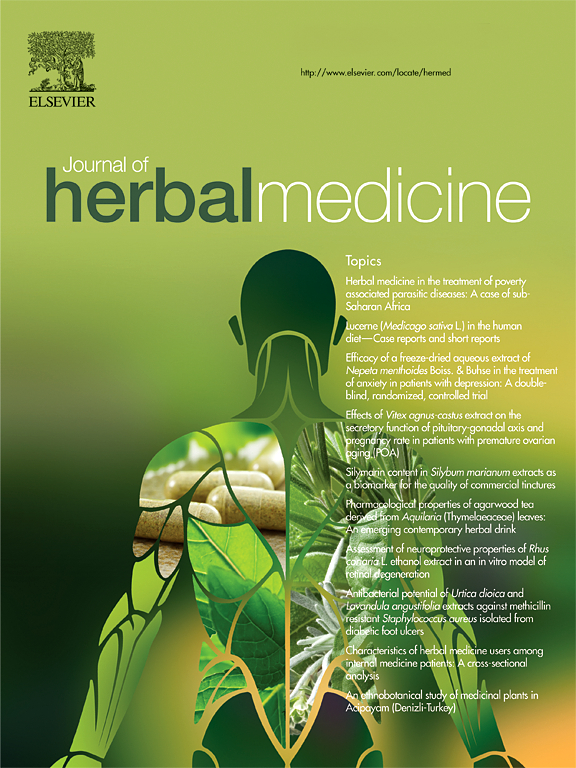基于网络药理学探讨姜黄素介导的光动力治疗系统性红斑狼疮的机制
IF 1.9
4区 医学
Q2 INTEGRATIVE & COMPLEMENTARY MEDICINE
引用次数: 0
摘要
为了探索潜在的治疗靶点,本研究利用网络药理学方法探讨姜黄素光动力治疗系统性红斑狼疮(SLE)的可能分子机制。方法利用veny2.1在线分析平台预测姜黄素光动力治疗SLE的潜在靶点,并进行基因本体功能注释和京都百科基因和基因组富集分析,筛选可能的潜在机制。然后利用Cytoscape软件构建蛋白-蛋白相互作用(PPI)网络图,获得核心靶点。结果网络药理学分析显示姜黄素、光动力学和SLE有73个共同靶点。基因本体富集分析和京都基因基因组百科全书通路富集分析进一步强调了鉴定的靶点与200个生物过程、25个细胞组分、37个分子功能和125个通路之间的关联。通过PPI网络分析进一步预测核心靶点包括AKT1、ALB、TNF、EGFR、CASP3、HSP90AA1、STAT3、HRAS、SRC和MMP9。结论本研究为深入探讨姜黄素光动力治疗SLE的机制提供了基础。本文章由计算机程序翻译,如有差异,请以英文原文为准。
Exploring the Mechanism of Curcumin-Mediated Photodynamic Therapy for Systemic Lupus Erythematosus Based on Network Pharmacology
Introduction
To explore the potential therapeutic targets, this study explored possible molecular mechanism of curcumin photodynamic therapy for systemic lupus erythematosus (SLE) using network pharmacology.
Methods
The potential targets for SLE upon curcumin and photodynamic treatment were predicted using Venny 2.1 online analysis platform, followed by gene ontology functional annotation and kyoto encyclopaedia of genes and genomes enrichment analyses being performed to screen the possible underlying mechanisms. The core targets were then obtained through construction of protein-protein interaction (PPI) network maps using Cytoscape software.
Results
The network pharmacology analyses showed that 73 common targets for curcumin, photodynamics, and SLE. The gene ontology enrichment analysis and kyoto encyclopaedia of genes and genomes pathway enrichment analysis further highlighted the association between identified targets with 200 biological processes, 25 cellular components, 37 molecular functions, and 125 pathways. The core targets including AKT1, ALB, TNF, EGFR, CASP3, HSP90AA1, STAT3, HRAS, SRC, and MMP9 were further predicted through PPI network analysis.
Conclusions
This study provided a basis for the in-depth exploration of the mechanism of curcumin photodynamic therapy for SLE.
求助全文
通过发布文献求助,成功后即可免费获取论文全文。
去求助
来源期刊

Journal of Herbal Medicine
INTEGRATIVE & COMPLEMENTARY MEDICINE-
CiteScore
3.90
自引率
0.00%
发文量
94
期刊介绍:
The Journal of Herbal Medicine, the official journal of the National Institute of Medical Herbalists, is a peer reviewed journal which aims to serve its readers as an authoritative resource on the profession and practice of herbal medicine. The content areas of the journal reflect the interests of Medical Herbalists and other health professionals interested in the clinical and professional application of botanical medicines. The objective is to strengthen the research and educational base of herbal medicine with research papers in the form of case studies, original research articles and reviews, monographs, clinical trials and relevant in vitro studies. It also publishes policy statements, opinion pieces, book reviews, conference proceedings and profession related information such as pharmacovigilance reports providing an information source for not only the Herbal Practitioner but any Health professional with an interest in phytotherapy.
 求助内容:
求助内容: 应助结果提醒方式:
应助结果提醒方式:


